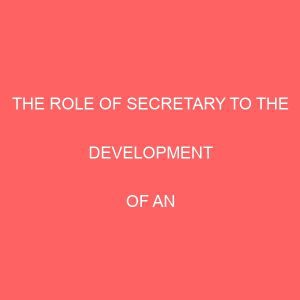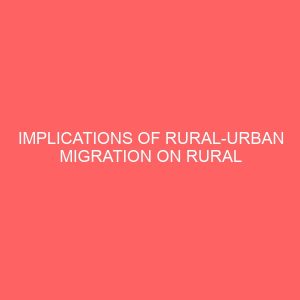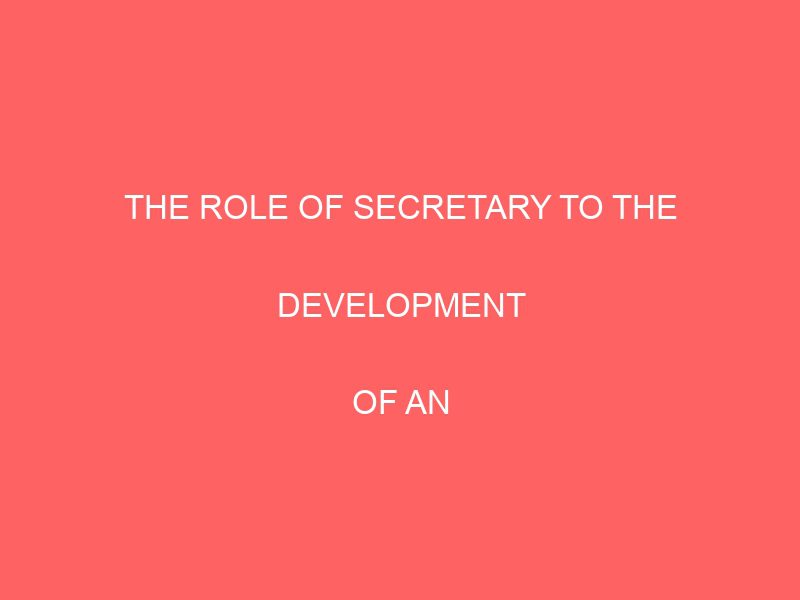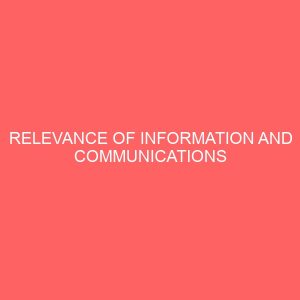Description
CHAPTER ONE
1.0 INTRODUCTION
1.1 Background to the Study
The contingency theory claims there is no best way to organize a corporation, to lead a company, or to make decisions. Organizational communication, or decision making style that is effective in some situations, may not be successful in other situations. It is the contention of this study that optimal organization performance within an organization can be achieved through the transformational communication style that allows for a collaborative organization culture to exist.
The Hawthorne study suggested the one factor surrounding employee performance is the social and psychological needs of employee must be understood in order to be motivated to complete their assigned tasks. Unless the organization comprehends and fully supports the premise that organizations must have high degrees of communications to meet employee psychological needs the organization will remain stagnant. Leaders and managers must realize the need to effectively convey and receive information, effective communications through the transformational leader is the foundation for meeting and developing the psychological and economic needs of employees within an organization.
Organizations must develop a communication style that resonates with its employees.
1.2 Statement of the Problem
Many organizational communication practices are heavily based on the transactional leadership style, where the transactional leader creates clear structures that must be observed and followed by subordinates often limiting collaborative communication and a shared vision environment of a healthy organizational culture. The incorrect leadership style can create an organizational culture that does not motivate or contribute to employee productivity.
i. Which style of communication, transactional or transformational is most effective in creating a collaborative organizational environment?
ii. Will employees achieve a higher level of productivity through the communication style of the transformational or transactional leadership within an organization?
iii. How does leadership communication affect employees?
1.3 Purpose of the study
This study tends to:
i. show the impact of goods office management on organizational productivity
ii. to give good contribution on how staff welfare can affect organizational productivity
iii. to examine the causes of good organizational productivity
1.4 Objectives of the study
The main and general objectives of this research are to show the impact of goods office management and staff welfare on organizational productivity in brewery. However, the specific objectives of this study are listed below:-
i. to show the impact of goods office management on organizational productivity
ii. to examine the effect of staff welfare on organizational productivity
iii. to determine the factors that can promote the goods organizatj0J Productivity among workers in brewery
1.5 Research Questions
i. What are impacts of good office management on organisation productivity?
ii. Can staff welfare impact organisation production?
iii. To what extent is organization Productivity affected by the management?
1.6 Scope of the study
This study is delimited to the following aspects
i. The impact of goods office management on organisation productivity in brewery
ii. Effect of staff welfare on organisational productivity
iii. Sorting out of employable staff
iv. The rules and regulation to be followed in office management
1.7 Significance of the study
The result of this study will help to promote the impact of good office management and staff welfare on organizational productivity in brewery in the following specific ways:
i. The benefit that shall accrue from this study are many specifically, managers will benefit from the result of this in that they will use this instrument to manage the office and their staffs.
ii. Staffs will benefit from the result of this study to access their work, delegated to them, and their laid down rules and regulations in office work.
iii. It will also improve the staff productivity in brewery in organization
iv. It will help by considering the welfare of the staff.
v. This project will be also useful for the future researchers, aside from updating the readers on this topic.
1.8 Definition of Terms
The following central terms are operationally defined based on their usage in this study:
1. Communication: Is the transfer of information from one person to another
2. Organization. An enterprise! Business entity.
3. Performance: The rate at which something works.
4. Management: People or person in charge of organization.
5. Top-Level Management: refers to the head of any organization.
6. Middle Level/Management: These groups consist of the personnel accountant and marketing officers. This group is answerable to the top level management.
7. Low level Management: This group carries most of the information both to the top level and middle level management and they are referred to as the supervisory level.







